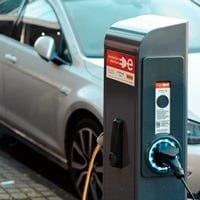(LUXEMBOURG) – The number of battery-only electric passenger cars in the EU reached nearly 3 million in 2022, data released Tuesday by Eurostat said – a 55 per cent increase compared with 2021 (1.9 million).
According to a collection of data released by the EU statistics agency, the highest annual rate of increase in battery-only electric passenger cars in the period 2013-2022 was noted between 2019 and 2020 (+85%), followed by the increase in 2021 compared with 2020 (+78%). The share of battery-only electric passenger cars in the total number of passenger cars grew from 0.02% in 2013 to 1.19% in 2022.
The overall share of battery-only electric passenger cars is expected to grow considerably over the coming years, the data shows, in the run-up to a 2035 EU ban on the sale of new combustion engine cars. The ban is linked to the Sustainable Development Indicator on reducing CO2 emissions from new passenger cars.
Eurostat also finds that the total number of passenger cars (running on petrol or diesel including hybrids; or on all types of alternative energy including battery-only) has grown in almost all of the EU members over the last five years, reaching a total of nearly 253 million passenger cars in 2022 (+14% compared with 2013).
The highest share of the new passenger cars (aged 2 years and less) among the EU members was registered in Luxembourg (18% of all passenger cars in Luxembourg), followed by Germany and Sweden (both 15%), Belgium, Ireland and Austria (all 13%). Meanwhile, the oldest passenger cars (20 years or older) were registered in Estonia (34%), Romania (31%), Finland (30%), Poland (29%) and Portugal (26%).


